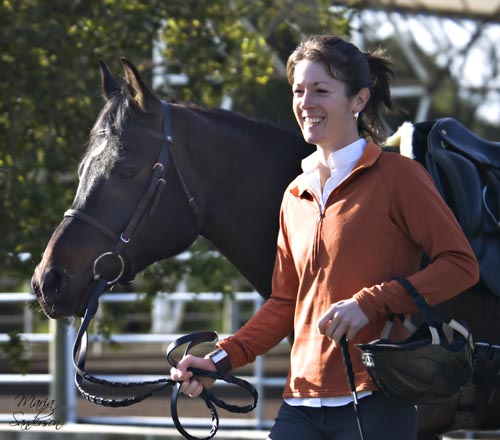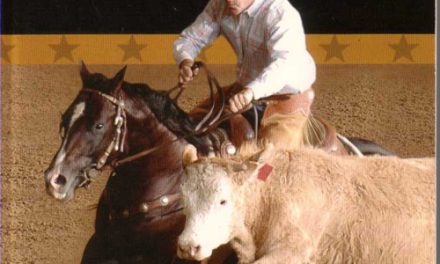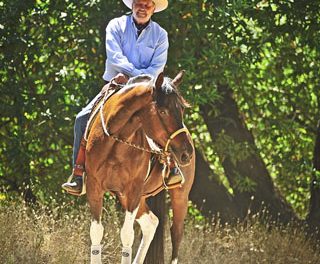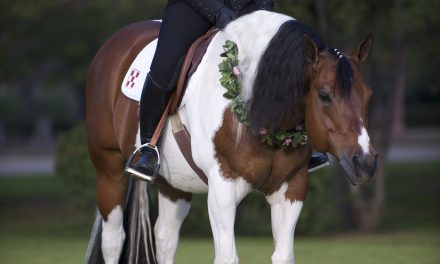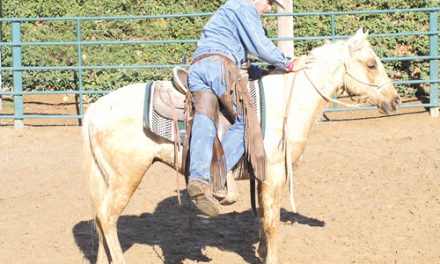It’s officially spring and that means it’s time to get fit! Fitness is equal parts strength, balance, and suppleness. On that note, this month we will discuss a crucial cardiovascular tool, one that also greatly loosens a horse’s spine: galloping.
Unlike any other exercise, galloping loosens the horse’s back, neck, and hips. It gets his lumbar-sacral area to rock and swing, and it stretches his whole range of motion. For arena horses, this means freer and more expressive movement overall.
Riders who train primarily in the arena often fail to gallop their horses, thereby missing out on a valuable gymnastic tool.
If you are unaccustomed to galloping, or are timid about doing so, the best way to start is by taking small steps, as I describe here.
From canter to gallop
In an arena, develop a regular canter. Make sure you have a light rein contact and that the horse is in a rounded topline posture.
Then, for 30 seconds, make the canter bigger, meaning the horse is going slightly faster and with longer strides. Sit in either a deep seat or a half-seat, whichever makes you feel more secure.
Come back to a regular canter. Assess how well things went. Did your horse get excited? Were you confident and comfortable as a rider? Did the horse change his stride with what felt like more propulsive power? Did you maintain a good contact?
Then, again make the canter bigger for 30 seconds and return to a regular canter.
Now that you’ve got the hang of it, alternate 30 second sessions of bigger canters with 30 seconds of a normal canter. Keep doing this for a period of several minutes. Be sure to do both left and right leads.
The next step is to stay in the bigger canter for longer than 30 seconds until it becomes a sustained period of galloping.
Once you are adept and confident with the 30 second sessions, you will be ready to take your gallop outside the arena on open land where there is more room.
Notes
• In a bigger canter, the horse should never be out of control or exciteable, nor should he start pulling on the reins. That’s why you start in the arena, where you can show your horse how to do things appropriately.
• Stick with the 30 second sessions until he learns the drill and you are comfortable riding at the faster speeds.
• The galloping motion is intended to free up the horse’s back. Due to his larger strides, the horse will need to use his back in a manner very different from his usual way of going. As you gallop, feel for those longer strides, a bigger jump up with each stride, and a swifter tempo.
About Jec A. Ballou. At age 13, Jec A. Ballou became the youngest rider in history to win the coveted Vermont 100-Mile Competitive Trail Ride. She followed that feat up with three back-to-back national long distance championships. Since then, she continues to study every aspect of classical training and conditioning with an undying commitment. She has also studied horse behavior and communication with numerous masters.
Jec has written articles for many national horse magazines, collaborating some of her writing with such well-known trainers, Charles DeKunffy, Sylvia Loch, and Manolo Mendez. Jec’s book, “101 Dressage Exercises for Horse and Rider” was on the best-seller list for eight consecutive weeks in 2006. Currently, Jec specializes in helping horses obtain healthy, optimal movement, regardless of their discipline. She offers lessons at Twin Oaks Farm in Felton, CA and is available for instruction at clinic locations throughout northern California. Visit her Web site at www.jecballou.com. Also, be sure to check out her humorous blog at www.jecballou.blogspot.com.

